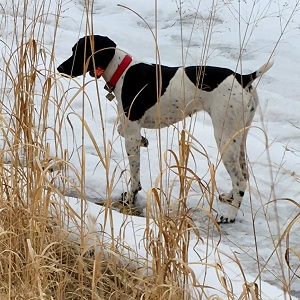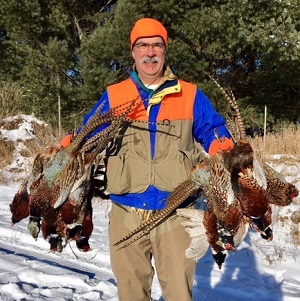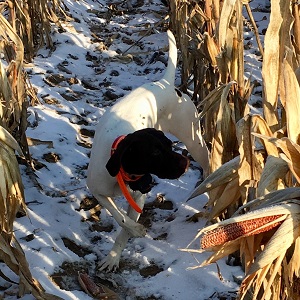Brainerd MN Grouse & Pheasant Hunting Guides
Pheasant Hunting Guide

Great Afternoon

Solid Point

Awesome Hunt

Great Honor

Pheasant Hunting Tips
Like us on face book for daily fishing pictures and reports!
Minnesota Pheasant Hunting Tips - Late-Season
Late-Season


Late season pheasant hunting in Minnesota requires a little more determination. Roosters have seen just about every trick in the book by this time in the season. They flush wildly at the first sight, or sound, of approaching pheasant hunters. Deciding where to hunt is not the problem. There is not that much cover left by late December. The shorter grassy fields where pheasants roosted in November are now drifted in with snow. You do not have to be a pheasant hunting guide to know where the birds are holding. The trick is getting close enough to flush the birds while they are still in gun range. Close working pheasant dogs are a must for these hunting conditions. Dogs working sixty yards ahead are not much help when the only rooster in the field flushes another twenty yards ahead. Late season Minnesota pheasant hunting requires well-disciplined bird dogs. It's just one more reason why I like to start each Minnesota pheasant hunting season with a few pre-season trips to Minnesota pheasant hunting clubs. These preseason workouts at the pheasant hunting preserves will repay you in spades by the time December pheasant hunting season rolls around. Nobody wants to hunt with a pheasant hunting guide whose pointer breaks whenever it wants. Who cares how many pheasant hens were flushed at your feet if the only roosters flushed were in the next county. I went pheasant hunting with a fellow Brainerd fishing guide several years back who had whistle trained his dog. He would give his whistle a loud trill and then shout out the dog's name every time he wanted it to quarter. His dog was well minded, but he must have blown that whistle once or twice for every five steps he took. We flushed over fifty pheasants on that particular hunt, with about a third of the birds being roosters. We never killed a bird. Every pheasant, with the exception of a few hens, flushed at least a hundred yards ahead of his dog. The sound of his whistle still echoes in my ears when I tell that story, but it taught me a lot about stealth. I like to seek out red willow thickets during the latter part of the Minnesota pheasant hunting season. Pheasants are always wary of airborne predators and often loiter in locations which provide overhead protection from hawks. Willow thickets provide safe havens for wary roosters to digest the contents of their crops. While these willow thickets might provide pheasants with safety from above, they also help obscure the stealthy approach of a pheasant hunting guide and his clients. These willow thickets provide "quiet" hunters an opportunity to sneak up on wary birds. This is one of the reasons I will only hunt with small groups. Leave the bells & whistles at home. One or two shouts at the dogs and the game is over!